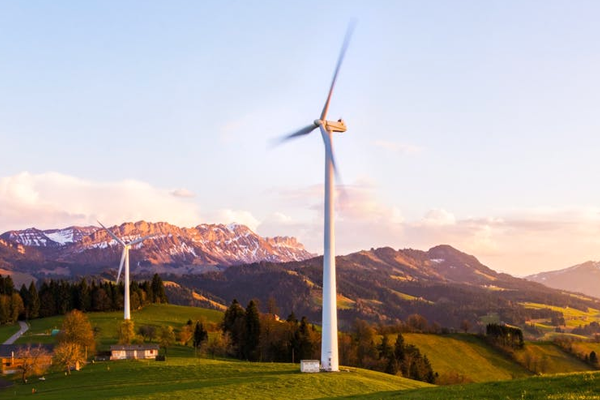If three tonnes is the immediate goal, then what does it look like? How will it feel different from now? Here, I will try and sketch how life could look and feel in this scenario.
For nearly everyone who has a relatively healthy income, or who lives in a fully industrialised country like the UK, three tonnes is a big challenge. It may seem unfeasible, or scary, and there can be no doubting the level of change that would be required. This post is intended as a very brief sketch of how things would be in a three tonne lifestyle scenario, rather than addressing the challenges of each.
Housing
Our houses will be much better insulated. Our current gas or oil boilers will be replaced by an air source heat pump that maintains a steady temperature all through the winter. We will have European style roller shutters on windows to keep out the extreme summer heat. So our houses will be a fairly pleasant temperature all year round and throughout the day. If it is feasible, we’ll have solar PV panels delivering electricity, and definitely a wall mounted battery to store surplus from the panels, and to charge up when the cost from the national grid is at its cheapest (and least carbon intensive). Many households will have rainwater harvesting systems to supplement the mains water that is currently used for some things (clothes washing and toilet flushing).
Reducing a footprint whilst living alone in a big house is very difficult, so there would be financial incentives for people to maximise the occupancy of their households with lodgers or tenants, or move to smaller, more energy efficient properties.
Vehicles
Vehicles will be made using predominantly recycled steel and other recycled materials in factories that are substantially powered by renewable energy.
Nearly all vehicles would be electric, making our cities quieter, cleaner, and smelling better. We will make fewer car journeys, with a lot more journeys made by walking, cycling, or public transport. There would be a lot less commuting, with people working from home or local hubs wherever possible. Our city streets will be easier to get round, less congested, less polluted, and less dangerous. Cities will prioritise pedestrian, cycling and public transport over private car use in congested areas.
Food
Most people will eat a lot less meat and dairy produce, and a lot more UK produced plant-based food. Intensive factory farming will no longer happen, and the UK will no longer rely on importing huge quantities of soya feed and grain from tropical areas. Food supply chains would be far more local, with much more food coming from UK farmers. Reliance on petrochemical fertilisers and pesticides would be greatly reduced, and more organic methods would become the norm, improving soil health and reducing the chemical runoff and eutrophication that is damaging our waterways. Much more plant based food would be farmed in new ways, using aquaculture or hydroponics, freeing up more of the British countryside for carbon sequestration, recreation, and much needed wildlife habitat renewal.
Most of our food would come with reusable packaging, recycled card packaging with very minimal plastic content. Or no disposable packaging at all.
Flights
The aviation industry has dragged its heels in modernising, so in the near term it will be almost impossible to take a long haul flight whilst keeping within a three tonne footprint. An occasional short haul flight would be possible within the three tonne lifestyle, especially if you didn’t own a car, but until aviation has developed as a less polluting form of transport, most travel would be done by train or electric vehicle. Travel to much of Europe by train and ferry will again become the norm.
As the aviation industry modernises its fleet of aircraft to new ultra-low polluting electric and biofuel planes, long haul foreign travel only again be on the menu as a regular event.
Shopping
We will buy a lot less in the way of new things. Items will cost more but be better quality and last much longer. We will buy more manufactured goods from the U.K. and other neighbouring countries, using far more recycled materials and factories with low carbon energy sources. We may borrow, lend, buy second-hand, and sell on what we no longer use.
Government
UK government infrastructure is highly developed, and accounts for a significant proportion of the overall footprint. At central government level, NHS sites would be run entirely on renewable energy. The Armed Forces would develop many more electric vehicles, although this is one area that potentially would be slow to decarbonise. New infrastructure projects would be approved primarily on a ‘spend to save’ basis of greenhouse gas emissions savings realised over a time frame. As a result, building new roads would be severely restricted. There will be no new fossil fuel exploitation, no new fossil fuel electricity generation.
Conclusion
There will be much more that will remain broadly the same than will change in this scenario. There will be many lifestyle improvements in comfort, ease of living, our overall health, and our day to day environment. Many of the less pleasant changes being forced on us already are the result of the weather extremes – heat, drought, flooding, wildfires, storms, increased circulation of airborne illnesses – that have come about from our previous inaction on tackling climate change. Our houses and our lifestyle will have to continue to evolve rapidly from here to deal with these vagaries.
